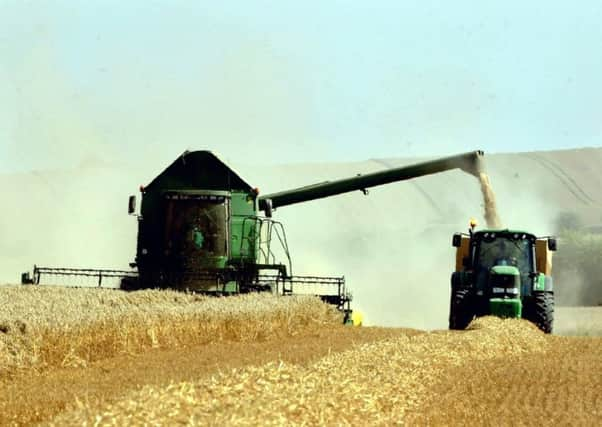Report warns of fewer farm subsidies after Brexit
This article contains affiliate links. We may earn a small commission on items purchased through this article, but that does not affect our editorial judgement.


While the SNP has been largely viewed as pro-farming, the real test for the administration will be in coming years when it will be faced with balancing spending on agriculture with that required for health and education, stated the farm consultancy Andersons in its Outlook 2017 publication.
The report said that Scotland’s devolved government had taken an increasingly divergent route on both agricultural policy and land reform issues from that taken by the administrations in England and Wales – and indicated that the post-Brexit future, for a Scotland either outside the EU or outside the UK, could see this trend go further.
Advertisement
Hide AdAdvertisement
Hide AdLooking to a Scottish Agricultural Policy post-Brexit, authors of the Scottish section, Ben Kellagher and Alex Caraffi, said that this could be based around a continuing regional-based payment system, which rewarded producers in the better areas for undertaking environmentally focused activities – but at a much lower level than at present.
“These areas are seen as being the most capable at adapting to change,” stated the report, which went on to look at the less favoured areas.
“The uplands, hills and islands could well see a payment system based on a regional payment – discounted or inflated depending on individual business stocking rates – or perhaps a small regional payment with a significant top-up based on headage payments.
“The result of this,” said the authors, “would be to focus support to the more remote and less flexible areas and would possibly allow the Scottish Government to get by with less funding.”
They said that such an approach would lead to fairly swift changes in both the number and structure of lowground businesses – while upland and hill systems would see relatively smaller or slower change.
However the report also highlighted the fact that the less favoured area support scheme (LFASS) was due for reform in 2017.
“And while there has been little discussion of this at present, the conversation will be challenging, particularly given many upland businesses’ reliance on this for payment for profits.”
Kellagher and Caraffi also pointed out that the one of the biggest events for the SNP government over the past year had been the debacle surrounding the payments of farm support to farmers – and the cash-flow problems this had caused for many rural businesses.
Advertisement
Hide AdAdvertisement
Hide AdHowever they stated that, should the party not hold power in the near future, farm support could become very different – indicating that the opposition parties did not have anywhere near the same empathy for rural areas.
